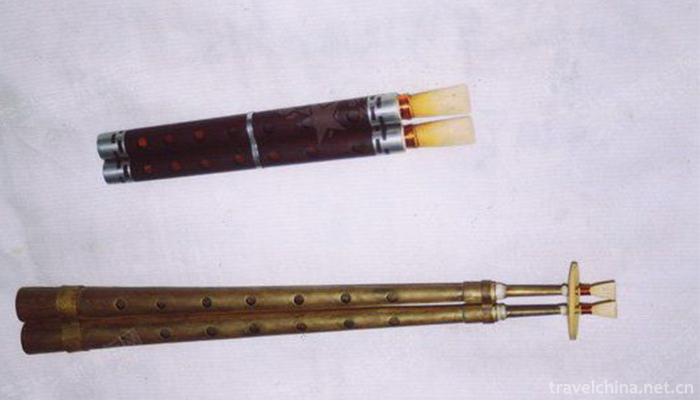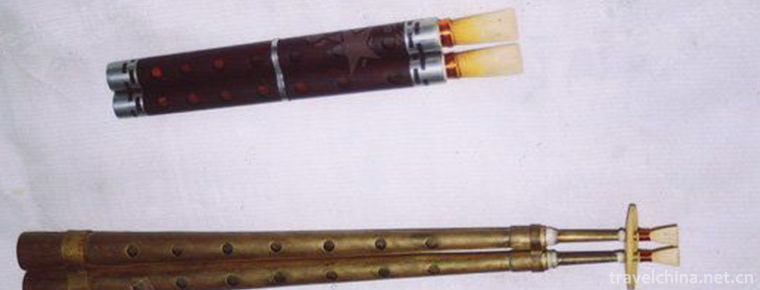Sheng Guanyue
Sheng Guanyue
The term "Sheng wind music" is not only a popular name in Chinese folk, but also a scientific name in the current academic circles. It refers to the orchestral performance form consisting of pipes (called Sheng in ancient times) as the main musical instrument, pipes, Sheng and flute as the framework, and other wind instruments, stringed instruments and percussion instruments. In its historical development, it has formed its own palace tune system, music score, performance style and social function, which is an important part of Chinese traditional music.
It is commonly known as folk music, because Buddha, Taoism, secular artists call it Shengguan music, shengguan, wind music, pipes, music, concerts and so on. The intention is very clear: pipes play the main part, and pipes do not divide.
There is a process of development for Sheng wind music to become the academic name of the current academia. At first, it was regarded as a form of drum music. Because of the prominence of the main instrument, it was also called wind music (such as Jizhong wind music).
On May 20, 2006, Shengguan Music was approved by the State Council to be included in the first batch of national intangible cultural heritage list.
historical origin
The traditional Chinese Shengguan music is distributed in the Central Plains and the vast northern areas. From the current regional distribution of the remaining Shengguan music species, it is centered in North China and radiated in the surrounding areas, mainly popular in Henan, Hebei, Shanxi, Shaanxi, Gansu, Liaoning, Shandong, Hubei and Beijing, Tianjin and other regions of the folk, monasteries and Taoist concepts. Historically, these areas are the political, economic and cultural centers of ancient Chinese feudal society. The ancient capital culture has become the dominant culture of its time, and has become a cultural tradition through successive dynasties. In the social background of China's super-stable feudal system for two thousand years, the super-stability of traditional music culture is particularly prominent. Therefore, traditional Sheng wind music is not only a concept of modern music department, but also a concept of history and culture, which occupies an important position in Chinese traditional music culture. Historically, the formation of Shengguan music is inseparable from the ruling class, religious development, folk customs and customs, and its development is accompanied by the development and changes of the feudal social system in China as a whole; from the perspective of social application, it runs through the courts, army, government, patriarchal clan villages, temples, Taoism and folk of all dynasties. It is not only an indispensable part of various rituals and rituals, but also an integral part of them. Musical life from the imperial court to the folk is closely related, and develops and changes with the advance and change of ideology and culture. It carries the music and cultural information of different historical stages and embodies the "high culture" quality of traditional Chinese music.
artistic characteristics
All the performers of Jizhong wind instrument are farmers who are not divorced from agricultural production. They gather to play every night except in the busy season. Especially those teenagers with strong desire for knowledge, both men and women, are the most active and hard-working objects to learn and inherit the skills of blowing songs. In addition to self-entertainment, sometimes also participated in folk marriage, funeral, joy, celebration etiquette performance (in the village performance is not paid, when hired to play outside the village is paid). Especially every year around the Lantern Festival (January 15th), it is the peak of the blowing song activities. Every village blowing song will be hired to the neighboring friendly village husband "string villages" to play all the way, and the band will go into the village with firecrackers, gongs and drums, loud and lively.
Representative Works
Pu'an Curse is one of the traditional Suites played by all kinds of folk Sheng orchestra. The suite was compiled by Rongzhai, a Mongolian scholar in the Qing Dynasty, and also played by string instruments. Pu'an is the name of a famous monk in Song Dynasty. He compiled chant-like verses with Sanskrit letters for religious believers to learn Sanskrit. Therefore, Pu'an Curse in Northern Shanxi is the abbreviation of "Pu'an Dade Zen Master's Interpretation of Zhang Shen'an" used by Buddhist monks daily homework. The melody of Pu'an Mantra is gentle and sincere. Accompaniment often uses Shengguan and tunic chamber to show a quiet and detached mood. In chanting, Sheng Guan accompanied, pious and solemn and full of vitality. This suite of songs varies greatly because of the differences in religious sects, class and society inheritance and vocal instruments, but the basic melody is basically the same.
Inheritance Significance
As an important intangible cultural heritage of China, it is necessary to carry on Inheritance and protection in the process of studying history through culture and protecting traditional national culture.


-
2.Terracotta Army
Terracotta Warriors and Horses, terracotta warriors and horses of Qin Shihuang, also referred to as terracotta warriors and horses or terracotta warriors and horses of Qin Dynasty
Time 2018-11-11 -
3.Hanguguan Historical and Cultural Tourist Area
Hangguguan Historic and Cultural Tourist Area is a national AAAA-level scenic spot built by Lingbao Municipal Committee and Municipal Government with an investment of 589 million yuan.
Time 2018-12-26 -
4.angye Temple
Sangye Temple, also known as Cunxiang Temple and Wubian Temple, is located in Sangye Town, Zaburg County, Shannan District, Tibet Autonomous Region, under the Habu Mountains on the North Bank of the Y
Time 2019-02-07 -
5.Shenyang Science Centrum
Shenyang Science Palace is located in Wulihe Central Business District, Shenyang District, Liaoning Province. It is a large-scale modern popular science education base in Shenyang District. It was bui
Time 2019-02-08 -
6.Pearl Lane
Zhuji Lane, located in Zhuji Village, Zhuji Town, Nanxiong City, Guangdong Province, covers an area of about 3 square kilometers. Zhuji Ancient Lane is one of the national 4A scenic spots and one of t
Time 2019-03-20 -
7.Huai Bang
Huai Bang (also known as Huai Diao, commonly known as Huai Qing Bangzi, Lao Huai Bang, Xiao Bang Opera and Xiao Ban Opera), is one of the traditional local operas in Henan Province and one of the nati
Time 2019-05-04 -
8.Mongolian Boke
Boke is one of Mongolian traditional sports and recreational activities. People on the grassland call Mongolian wrestling "Boke" (strong, united and lasting meaning of Mongolian). It is the
Time 2019-06-03 -
9.Mongolian Sawurden
Mongolian Sawurden, Xinjiang Uygur Autonomous Region and Jingxian traditional dance, one of the national intangible cultural heritage.
Time 2019-06-04 -
10.Tongcheng Song
Tongcheng Song is a kind of local folk song originating from Tongcheng, Anhui Province. It is a kind of local folk literature in the form of rhyme created by the local working people collectively. At
Time 2019-06-21 -
11.Wuzuquan
Wuzu Quan is one of the Nanquan in traditional Chinese boxing. It is said that Cai Yuming (from Quanzhou, Fujian Province, 1853-1910) synthesized Baihe Quan, Monkey Quan, Arhat Quan, Dazun Quan and Ta
Time 2019-06-29 -
12.Xiling Snow Mountain
Xiling Snow Mountain, located in Dayi County, Chengdu City, Sichuan Province, is only 95 kilometers away from Chengdu, with a total area of 483 square kilometers. It is a world natural heritage, giant panda habitat, AAAA tourist attraction and national key scenic spot.
Time 2020-11-06